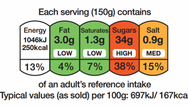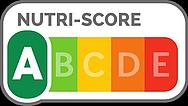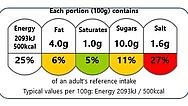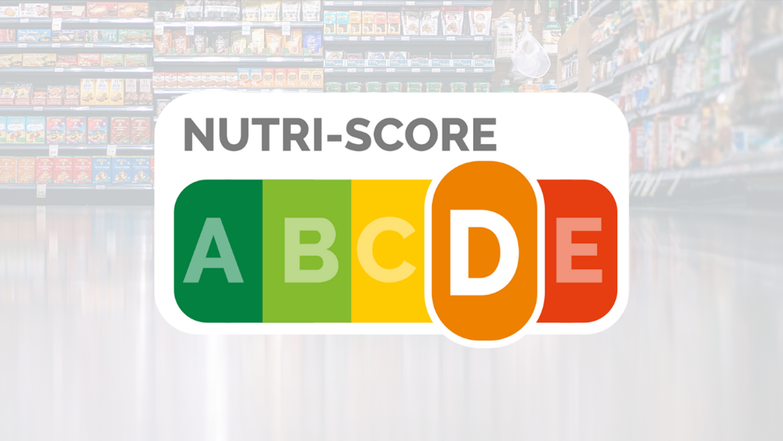The public has the right to know and understand what they are buying and eating. Front-of-pack nutritional labelling is one important measure to enable this. But the food industry fears a drop in profits if consumers would be able to identify which products are unhealthy. So they started a sophisticated lobby campaign against the introduction of a consumer-friendly nutritional label.
Half of all adults in EU are overweight
Unhealthy eating patterns are widespread across Europe. According to the World Health Organization, in the European Region, 59% of adults and almost 1 in 3 children are overweight or living with obesity and without action this number will grow substantially in the next decade . For years, health experts, doctors associations and consumer organisations have asked for effective political measures to stop the obesity health crisis, among them the introduction of a consumer-friendly nutritional label.
A lot of studies and experiences already prove: The Nutri-Score traffic light helps people to make healthier choices and gives manufacturers an incentive to revise their recipes and improve the nutritional quality of their products.
Industry tries to stop consumer friendly nutritional labelling
The food industry does not want a clear nutritional label to expose products with too much sugar, fat and salt. That is why there is heavy opposition, through all kinds of lobbying strategies:
- Stopping a mandatory label: Ever since the first European discussion about introducing a mandatory European nutritional label in 2004, the industry lobby has opposed it. It already put more than €1 billion into its counter lobby.
- Pushing for industry-friendly labels: When it became clear that industry could no longer block a nutritional label, companies started pushing for industry friendly labels - such as the Evolved Nutrition Label or the Italian NutrInform Battery System. But these designs are counter-intuitive and do not enable consumers to tell at a glance how balanced a food is.
- Hiding the label: The industry does not want the label to be prominently displayed on packaging. It wants to hide it on shelf tags.
- Delaying the label: Even after 18 years of discussion about a nutritional label, the industry continues to cast doubt with other labels, calls for more 'research', modification of Nutri-Score, and stresses that we should not "rush" decisions. This is how they gain time.
In short: The industry is trying to lobby against an efficient nutritional label in every possible way.
A history of 18 years of food lobbying
These lobbying strategies are not new. The food industry has been trying to stop an effective, consumer-friendly and science based nutritional label for about 18 years.

2004
British MPs are pushing to introduce a traffic light system (MTL - Multiple Traffic Light) in UK to combat the growing health problems caused by obesity. This nutritional label would allow consumers to compare (un)healthy products at a glance.

2005
Tesco, the UK's largest retail chain, launches a complicated counter model without colours: GDA (Guideline Daily Amount). The industry does not want its unhealthy products to get an orange or red traffic light.
2006
Major food companies including Kellogg's, PepsiCo and others also take action against a strict traffic light and adopt the colourless GDA system. They don’t want any red lights on their products!
In the Netherlands, food giants are developing their own label: “the Tick”. 85% of Dutch consumers find “the Tick” confusing because it also appears on high-sugar and high-fat products. After intense criticism, companies have had to remove “the Tick” from their products in 2016.
The British government is trying to fight the food industry and recommends the traffic light. Unfortunately the Multiple Traffic Light remains voluntary.
2007
In other EU countries such as Austria and Spain, voices are also starting to be raised in favour of traffic lights.
Industry lobbies start to take action in various EU member states. Industry in Germany fights against the traffic light colours, as it would "discriminate" against products given a red colour.
2008
The EU wants to overhaul European labelling rules, through a regulation on 'consumer food information'. Unfortunately, the European Commission does not include a mandatory traffic light system in the draft version.
2009
foodwatch launches an email campaign for the introduction of the food traffic light nutritional front of pack label. Almost 60,000 people had signed it by 2010. In surveys, up to 84% of Germans are in favour of clear nutrition labelling with the traffic light colours. It is becoming the best-known campaign of foodwatch.
foodwatch compiled (more than) 100 reasons in favour of the food traffic light in a 24-page report.
FoodDrinkEurope demands all kinds of exemptions from strict labelling in a memo.
Companies like Coca-Cola lobby in the EU Parliament building for GDA and against traffic lights.
2010
Corporate Europe Observatory reveals in a report that the industry spent over a billion Euro on advertising, campaigns and 'scientific' studies for the - much weaker - industry model GDA. This move was definitely a key element in its political strategy to combat other, stricter labelling options which it feared would damage sales of unhealthy food, such as the 'traffic light' system.
European Parliament votes disappointingly against mandatory traffic light labelling. The lobbying was successful - MEPs bow to massive lobby pressure from industry. Since 2008, foodwatch fought - together with allies such as paediatricians and health insurance companies - in Berlin and Brussels for traffic light labelling and against the lobbying influence of the industry. In the end it was not enough for the traffic light.
But one thing they could not fend off: the EU introduced for the first time ever a mandatory indication of the content of sugar, fat, salt & Co. in the form of the well-known nutrition tables in the small print - until then, even this information remained mostly secret. Without the pressure of the traffic light discussion, this would probably not have succeeded.
2013
Food companies in Britain voluntarily introduce the British Traffic Light (MTL). But after the lobbying battle for years the criteria of it are greatly weakened: Sugary products suddenly get a red traffic light less often than before.

2014
The traffic light is now called Nutri-Score! In 2014, the Nutri-Score is born, a new system based on different colour codes: the most independent traffic light yet, recommended by consumer organisations and scientists.
2017
France introduces the Nutri-Score.

2018
Coca-Cola, Unilever & Co start their counterattack again and develop another inefficient label: the 'Evolved Nutrition Label' (ENL). With this label, even sugary and fatty chocolate spreads look healthy. After a dozen months of overwhelming criticism, the companies withdraw ENL.
But: Belgium and Spain introduced the Nutri-Score.
2019
Despite the criticism, Coca-Cola is still putting its bland label - ENL - on soft drinks in Dutch supermarkets. The Dutch government criticizes the company, but takes no further action.
At the end of 2019, the Dutch government announced the Nutri-Score as a new nutrition labelling scheme. The label’s introduction, however, faced delays as criticism sparked. Producers are not allowed to introduce it yet: there must first be agreement on the calculations behind the label.
The German Federal Ministry of Nutrition even had a scientific study rewritten that gave the Nutri-Score food traffic light a good report card. In the end, the amended version said: "none of the nutrition labelling models can be recommended without reservation". It is obvious: Those who have scientific studies rewritten and try to prevent their publication are not making policy based on science and facts.
2020
The responsible German Minister of Food, Julia Klöckner, was opposed to the introduction of the Nutri-Score. Her ear is closer to the food industry than to the wishes of consumers, and she still thinks there should be no traffic light-coloured logo, developed by independent scientists. But foodwatch was able to prove that the the minister had played foul with a scientific study. foodwatch won over the public to the new traffic light and, with the help of a French expert, also convinced the German media of the advantages of the Nutri Score. As even the food industry was split into two camps, the German government had to give up its resistance. foodwatch had achieved a historic victory. In November 2020, the Nutri Score became the official voluntary nutrition labelling system in Germany.
The food lobby is working flat out to change the calculation basis of the Nutri-Score. Unscientific demands come mainly from the German Food Association.
2021
More than 400 European scientists and medical bodies are calling on the European Commission to make the food choice label Nutri-Score mandatory in the EU. They warn against lobbying attempts by the food industry to prevent this.
And really: The Italian government is becoming the front-runner of a massive campaign against Nutri-Score in Brussels with a nationalist tenor, in the interests of unhealthy food corporates such as Ferrero. Their claims that the Nutri-Score would discriminate the Mediterranean diet and traditional products are simply not true.
2022
The EU Commission intends to propose a mandatory European nutrition label for food in the fourth quarter of 2022. For the Nutri-Score to be fully effective, voluntary labelling is not enough. foodwatch is calling for an EU-wide mandatory front-of-pack labelling of food with the Nutri-Score! It is the best option on the EU internal market and already introduced in six EU member states: Belgium, France, Germany, Luxemburg, Netherlands, Spain.
